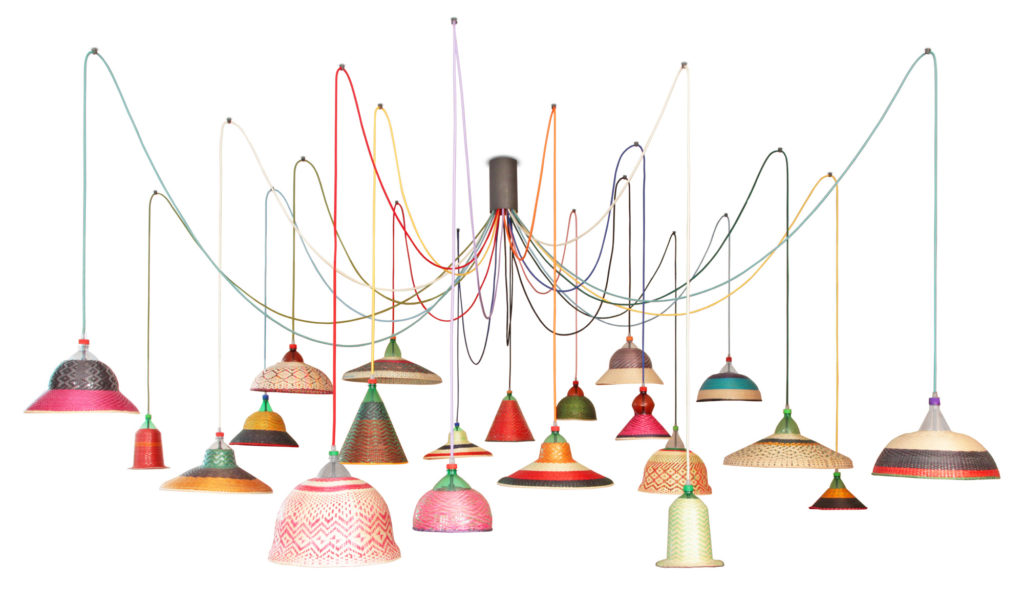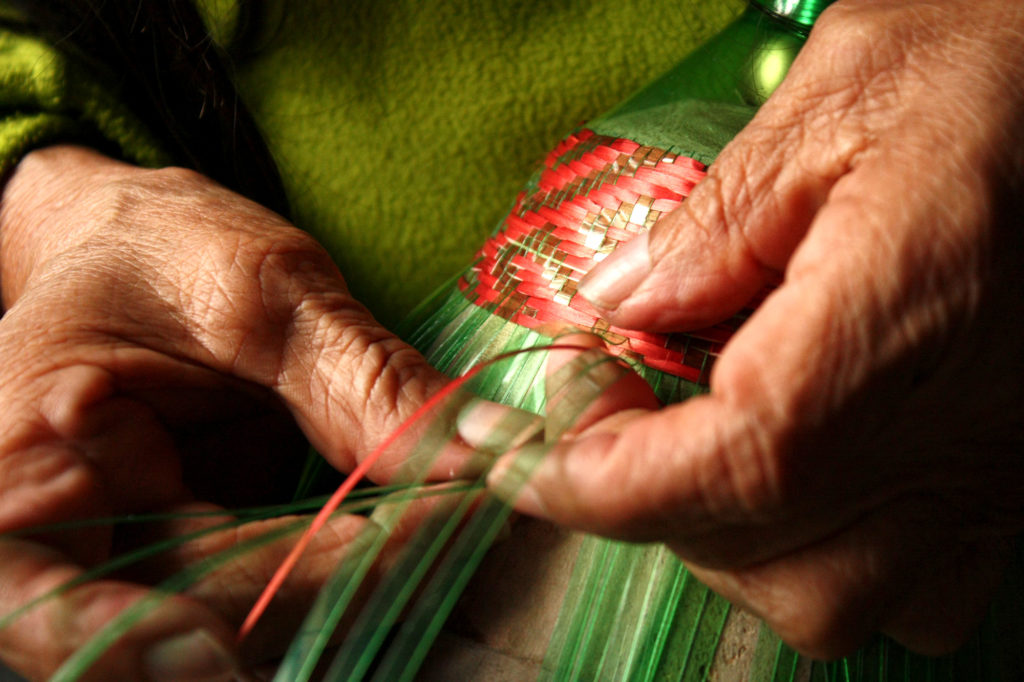Weaving light
The PET Lamp Project serves as strong proof that, in design, the process is as important as the end result. Likewise, if the process has been underpinned by ethical goals — such as recycling, poverty reduction, and helping keep traditional crafts alive — then the broader, social impacts of a design object can be significant.

Born in 2011 in the Amazonian jungles of Colombia, the PET Project — by Spanish designer Alvaro Catalán de Ocón — mixes the reuse of plastic bottles with selected traditional weaving techniques in order to create unique, handmade lampshades.
Since its inception, the project has worked with traditional craftspeople from Colombia, Chile, Ghana, Ethiopia, Australia, Japan, and Thailand, with several others in the planning stages.
The result is eight collections of lamps from traditional indigenous cultures that exude handmade craftsmanship, a vibrant exploration of colour and materials, and a fantastic narrative.

Bioplastic fantastic
The Componibili storage system was designed by Anna Castelli Ferrieri in 1967 and produced by Kartell. The stackable, colourful, and very playful units became an absolute hit not just in their native Italy but worldwide, with some of the most prestigious museums having originals in their permanent collection.

Part of the system’s popularity came from the fact that it followed the ’60s trend of ‘plastic is fantastic’.
Fast forward 50 years and the material, in its single-use forms, is now seen as anything but fantastic. Following the sign of the times, Kartell has taken its iconic Componibili design and upgraded its materials. According to the firm, the cute little storage icons are now made from a “biopolymer made from renewable raw materials, derived from non-GMO agricultural waste not intended for the food chain”. The storage system conforms with several reputable ratings and certifications — i.e the United Nations — and retains the joyful vibe that made it so popular in the first place.





